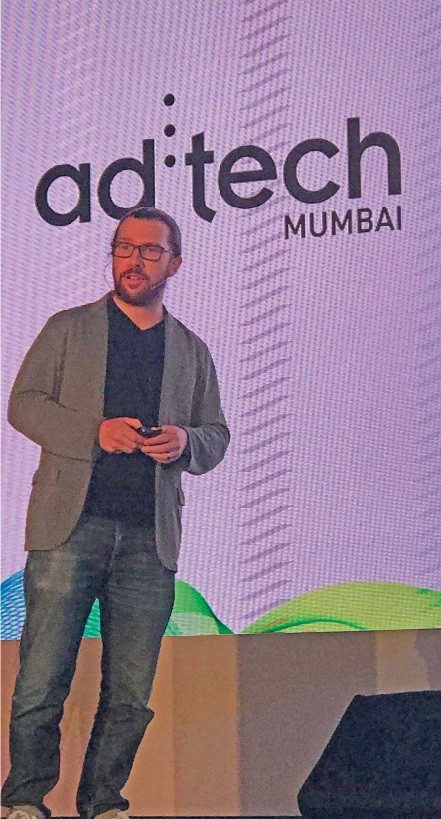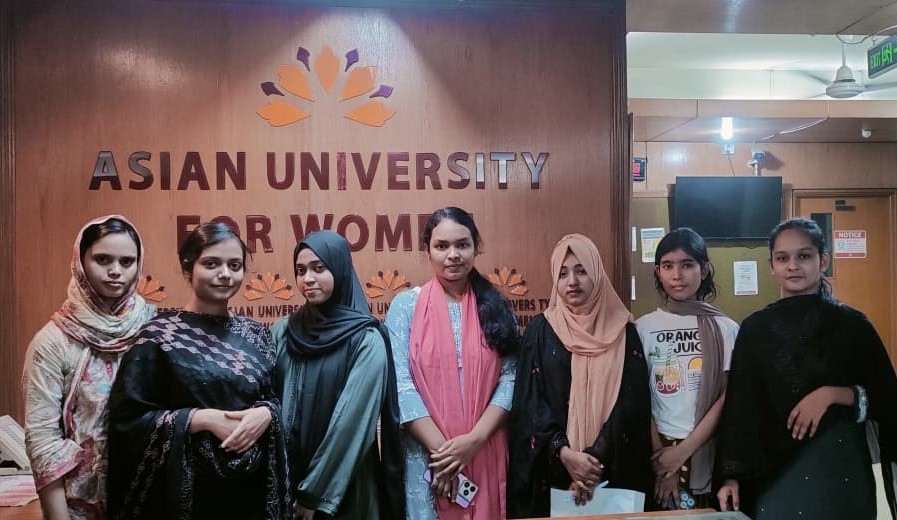By Nazmul Karim Chowdhury
“INSANITY WITH A PURPOSE: DEFINING A ROLE FOR TECHNOLOGY IN BUILDING BRANDS”.
In my first column for the January issue, I began with the insights of top marketers from the Banking and Technology industries. The same experts spoke at the AD:Tech summit in Mumbai recently, explaining a creative approach to embedding data for deeper consumer engagement. Right after their keynotes, David Webster, Chief Growth Officer and Managing Partner of Bartle Bogle Hegarty (BBH), one of the fastest growing global advertising agencies took the stage to expound on the topic, “Insanity with a purpose: defining a role for technology in building brands”.
According to David, insanity fueled by deep purpose coupled with the smart use of technology contributes to building great brands. It is imperative for marketers to believe in the power of insanity when it comes to building brands. Four years ago, BBH started inviting a series of speakers – clients, advertising agency executives, business partners, creative confidants – from the industry in the London office, to answer one question; What is insanity?
Four distinct definitions made its way to the table. Insanity is a fine line between genius and madness. Insanity is taking a small idea and creatively growing it to an extent that it becomes memorable and effective. Insanity is knowing that once a great idea is incepted, there is only going forward with warp speed. Insanity is mesmerizing people with an idea.
After much deliberation, David and his creative team concluded that the logical consequence of having a high degree of purpose is insanity. The consequence of a high degree of purpose is the absolute determination to do the right, best and biggest to build an iconic brand.
Everyone remembers and fondly recalls the staggering genius of Steve Jobs, who revolutionized the world with his groundbreaking dream of launching remarkable apple products which surpassed consumer’s imaginative capabilities. Steve Jobs was imbued with the deep purpose of creating something extraordinary which is fuelled by insanity. The launch of Jio by Mukesh Ambani is also an insane idea borne out of deeper purpose. Since its launch two years ago, Jio has entirely disrupted the mobile telephony services in India and attracted a remarkable 280 million customers. Jio has helped to build a socio-economic revolution in India. Millions of Indians are now able to access the internet to register for benefit payments, download school textbooks or simply stream a cricket match for the first time. Elon Musk, the tabloid-friendly genius of Tesla is another incumbent to the sense of deep purpose and wishes to perish on Mars.
David explained, “Creativity is the child of purpose and insanity; only when you bring insanity together with real purpose and real intent, it encourages creativity to thrive.” And in that manner, creativity is true in the role of technology. Technology can play a pivotal role in pushing the boundary of creativity, ultimately for the benefit of the brand and the business.
During brand marketer briefs it is commonplace for agencies to introduce a new product, and explain the use of technology. Instead of beginning with technology, marketers need to start leading with brand stories. Marketers need to know the story they want to narrate because brands are stories. Some will love the story, some will hate them and some will believe them and some will bin them. The story could revolve around the genesis of the brand, where it began from and how it has evolved.
Technology, on the other hand, is the vehicle for telling compelling stories. A powerful tool that may tell better, complete, more powerful stories. Therefore, technology has to enable storytelling, service the relaying of the story, and help build moving and inspiring narratives for the brand.
David presented one of his recent success stories of the campaign from BBH where Nike, Google, and BBH Singapore have partnered for a remarkable online/offline project called Nike Hyper Basketball Court, which brings digital content to beautifully painted physical basketball courts. It began in the Philippines in 2017. There are five Hyper Courts so far, spread across five districts of Manila. Each has been painted—with portraits of NBA stars LeBron James, Kobe Bryant, Kevin Durant, Russell Westbrook, and Kyrie Irving—by Arturo Torres, the illustrator known for his superhero-style illustrations of rappers and basketball stars.

The Hyper Courts featured an on-court digital platform that players can tap into with their smartphones. Without having to use any data whatsoever, players can pull up all sorts of Nike content that will help them with their game—including training drills tailored for different types of players. The more a player uses the platform, the more it learns and makes recommendations. The passion for basketball in Manila is unlike any other city in Asia. Nike wanted to inspire young basketball players to realize their full potential through the physical and digital aspects of their sport. Nike Hyper Court enabled these aspiring basketball players to train anytime without worrying about access to training drills and data costs.
“Bringing two brands like Nike and Google together has allowed BBH to deliver a truly world-class experience of the brand,” said David. Nike Hyper Court played a transformational role in Filipino basketball. It gave millions of kids access to some of the best training available and helped them raised their game. David also added, “Nike Hyper Court, powered by Google, presents a great example of how businesses can partner with the community to customize technology and provide an original, digital solution aimed at empowering basketball players and youth in Philippine and allowed endless possibilities on and off the court.”
David ended the session with three takeaways for the marketers; (i) Creativity is the child of purpose and technology along with a healthy dose of insanity. (ii) A marketer has to relay the brand story first before revealing the technology. Technology is nothing but a vehicle that enables better storytelling. So use technology for powerful storytelling; compelling storytelling and build your brand. (iii) Do not make for the sake of making. Find purpose in what you are creating, and harness the power of technology to inject meaning and the delight of insanity in it.
David feels, technology is too often seen as an end in itself but it’s not true. Nonetheless, technology is playing a significant role in helping deliver ground-breaking creativity for some of the world’s most successful and iconic brands. David concluded by saying “we must leverage the power of emerging technologies to deliver value to consumers and build great brand equity.”















